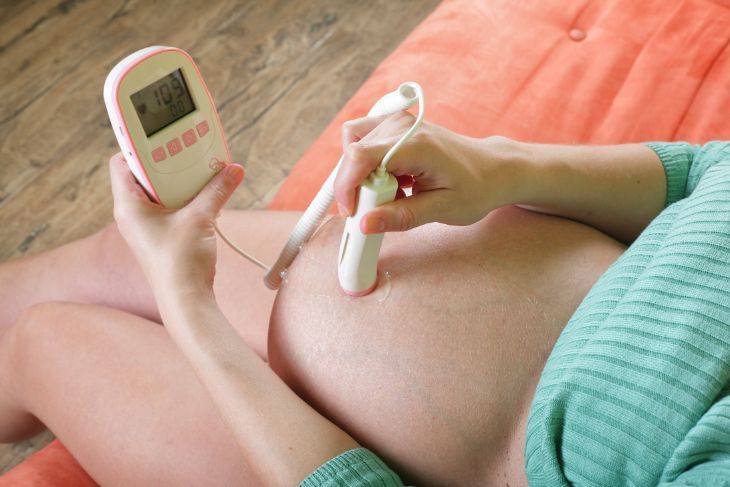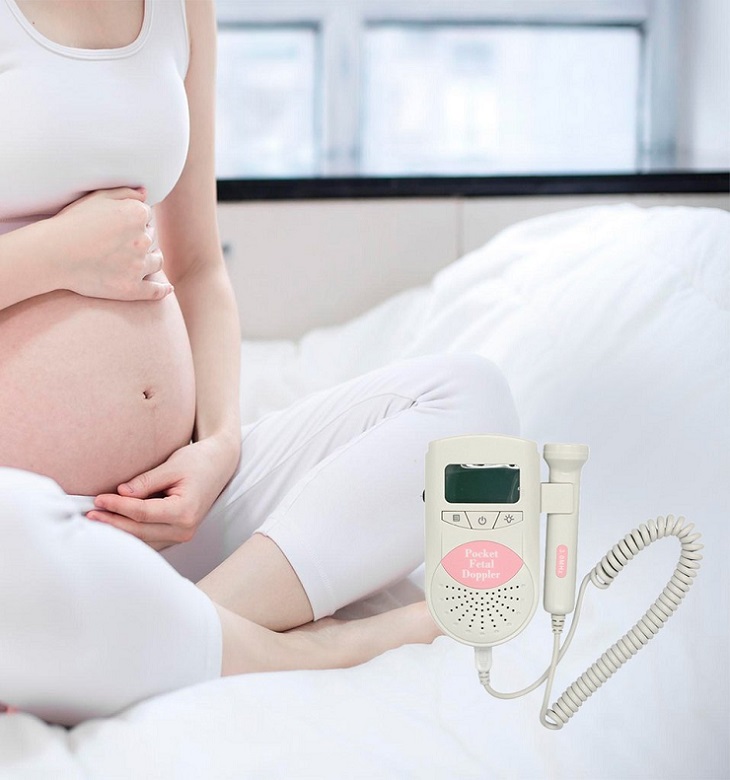
Listening to your baby’s heart is an important part of your pregnancy and you may find this to be the best moment of your prenatal care appointments. However, having to wait between appointments to listen to your baby’s heartbeat and ensure that everything is fine with him/her, can make you a little anxious. The good news is, there is a device that allows you to hear your baby’s heartbeat at home whenever you want. I’m talking about the baby heartbeat monitor. Also called a ‘fetal heart rate monitor’ or ‘fetal doppler’, this is a non-invasive diagnostic instrument that’s used to detect and measure the heartbeat of the fetus. It allows you to listen to the heartbeat of your baby inside the womb any time you want to, easing any fears or concerns you may have regarding the health of your unborn child.
Like any other parent who cares about the wellbeing of their baby, you too may be wondering: Are baby heartbeat monitors safe? Yes, they are. Heart dopplers work using low emission ultrasound technology, they are regulated by the FDA and are approved for in-home use. The monitors are simple to operate – all you need to do is place gel on your stomach right above the pelvic bone and move the monitor around until you find the heartbeat. Some women get to hear the heartbeat of their babies with a home doppler device as early as eight weeks into the pregnancy, while others don’t heart it until they are close to 12 weeks. For this reason, experts advise that you should wait until you are 12 weeks pregnant to start checking for your baby’s heartbeat.
When you hear your baby’s heartbeat on the device, you may be surprised (especially if this is your first pregnancy) as it may be faster than you’ve expected. This isn’t a reason for concern though. It is normal for the fetal heartbeat to be between 120 and 180 beats per minute, although this can be higher or lower without meaning that the baby is in trouble. Variations in the baby’s heart rate are often caused by the womb contracting, which affects the blood flow to the placenta. This is normal and most babies cope without any difficulty. It is important to mention that the results that fetal monitors provide should not replace your visits to your healthcare professional – all questions and concerns should be addressed with him.

Where to Buy a Baby Heart Monitor?
In the technological age that we live in, buying a fetal doppler is not that complex. You can order a baby heartbeat monitor online and receive it within a day or two. But before you click ‘purchase’, there are some important features that you should consider.
1. Lightweight, Compact and Ergonomic Design
A fetal doppler that has these features is easy to carry and convenient. So, look for models that are lightweight and easy to use. You already are carrying some extra weight on you during these months, you don’t want to have to lug any heavy device with you, do you?
2. Easy to Use
If your doppler is easy to use, you will be more likely to use it whenever you want to and won’t have a hard time operating it to get accurate results. This ultrasound technology requires basic skills to use it, so you shouldn’t have any issues using it.
3. Large LCD Display
Choosing a heart doppler that can automatically display the fetal heart rate will save you from having to manually count and register the fetal heartbeat sound. Doing so ensures that you can use the device more easily and confidently, which in turn will reduce the chances for errors when using it.
4. Precise Fetal Heartbeat Detection with Clear Sound
You need a doppler monitor that can deliver clear fetal heartbeat sounds reliably and consistently. This will help you to make the best judgments and will save you from unnecessary stress.
5. High-Quality
Low-quality dopplers generally have less sophisticated and less accurate technology when compared to high-quality models. You might not even be able to hear the heartbeat of your baby when using a low-quality doppler, which can only add to your anxiety. For better peace of mind and reliable results, invest in a high-quality fetal doppler.

How to Monitor Baby Heartbeat at Home?
The first time using your fetal heartbeat monitor is probably the hardest. But once you get used to it, it will become easier. To get started, you should be relaxed, comfortable and prepared for it to take a bit longer than you expect. Follow these tips when using your monitor at home.
- Apply gel on the end of the probe – Apply just enough to generously cover the surface at the end of the probe.
- Start with the end of the probe low down on your belly – The earlier you are in your pregnancy, the lower on your belly you will need to start. As your pregnancy progresses, you should be able to find your baby’s heartbeat higher up.
- Change the angle of the probe to find the heartbeat – Finding your baby’s heartbeat early in pregnancy can be a little difficult. So make sure you search slowly and make small changes in the angle of the beam. It’s important not to drag the probe around the surface of your belly. Simply change the angle of the probe, like using a joystick.
Besides the heartbeat of your baby, you may also pick up some other sounds when using the doppler. The umbilical cord, the placenta and your own very large arteries, may all be detected when using the heartbeat monitor. But don’t worry – you will know when you are listening to your baby’s heartbeat because it will have a very sharp, ‘galloping’ beat that is much faster than your own heartbeat. If you have any concerns about your pregnancy like bleeding or lack of fetal movement, please contact your health care provider immediately.

